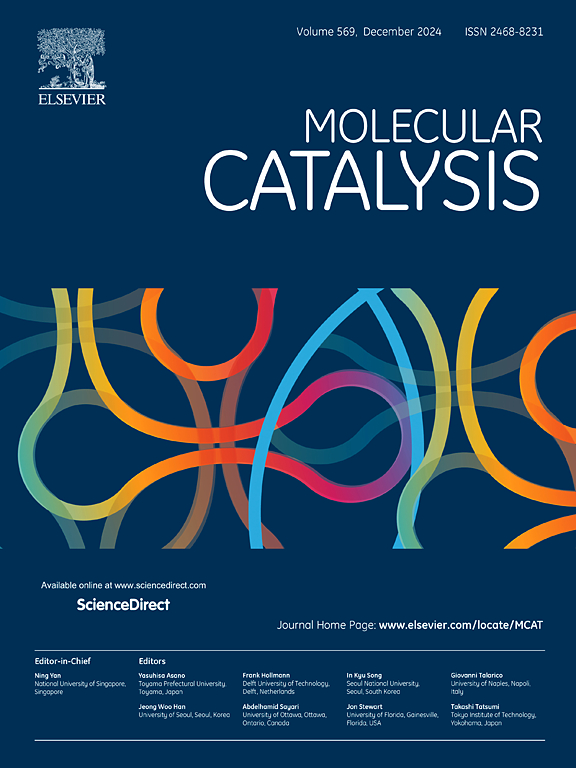Rational design of CdS/NH2-UiO-66(Zr) nanocomposites via robust covalent linkages for photocatalytic coproduced H2 and organic compounds
IF 3.9
2区 化学
Q2 CHEMISTRY, PHYSICAL
引用次数: 0
Abstract
Photocatalytic hydrogen (H2) evolution from organic substrates is an appealing process since H2 and high-value chemicals can be simultaneously produced by harnessing solar radiation through the utilization of semiconductor photocatalysts. Herein, we report the preparation of CdS/NH2-UiO-66(Zr) nanocomposites, in which CdS quantum dots (QDs) are firmly immobilized on NH2-UiO-66(Zr) through a robust covalent assembly strategy. The resulting CdS/NH2-UiO-66(Zr) nanocomposites demonstrate remarkable performance in the coproduction of hydrobenzoin (HB) and H2 from benzyl alcohol under visible-light irradiation, owing to the strong interfacial interaction. The significantly superior activity exhibited over the CdS/NH2-UiO-66(Zr) nanocomposites, when contrasted with that over a simple grinding of CdS and NH2-UiO-66(Zr), strikingly emphasizes the pivotal significance of rational interface engineering within photocatalytic systems. This work presents a green and sustainable approach for the synthesis of hydrobenzoins and paves the way for further exploration and optimization of semiconductor QDs/metal-organic frameworks nanocomposites.

求助全文
约1分钟内获得全文
求助全文
来源期刊

Molecular Catalysis
Chemical Engineering-Process Chemistry and Technology
CiteScore
6.90
自引率
10.90%
发文量
700
审稿时长
40 days
期刊介绍:
Molecular Catalysis publishes full papers that are original, rigorous, and scholarly contributions examining the molecular and atomic aspects of catalytic activation and reaction mechanisms. The fields covered are:
Heterogeneous catalysis including immobilized molecular catalysts
Homogeneous catalysis including organocatalysis, organometallic catalysis and biocatalysis
Photo- and electrochemistry
Theoretical aspects of catalysis analyzed by computational methods
 求助内容:
求助内容: 应助结果提醒方式:
应助结果提醒方式:


